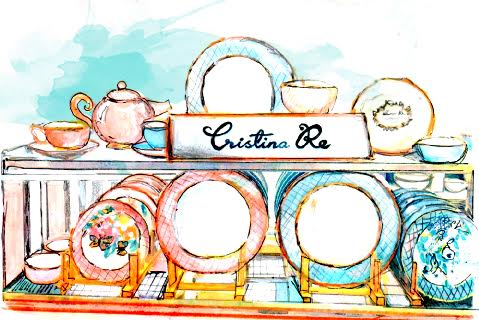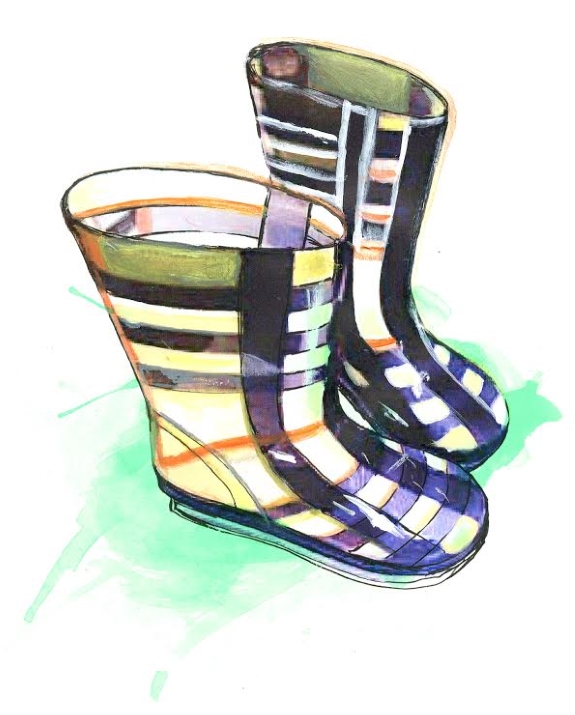
Years ago, if the director of a large company had been asked “What is the value of your company’s brand?” the response may have been a blank stare.
But not today.
Australian businesses (even small ones) have realised that brands that were once just considered an effective way to communicate a marketing message to consumers, can actually be one of the most valuable assets that a company can own, or as it has otherwise been put “the oil of the 21st century”.
Naomi Klein recalls, in her book No Logo, that when Philip Morris bought Kraft in 1988 for $12.6 billion, apparently six times its worth, the difference in cost was put down to one word: “Kraft”[1] This is not just something for big businesses to consider as the brand name that any one will use can be considered the glue that keeps people coming back.
So legally speaking then, how do you protect that brand (and the goodwill and reputation that is wrapped up in it)?
Trade marking is critical and so is the marketing strategy you use. Let’s demonstrate this….
Good brand protection impacts on your marketing strategies
It has been said that “Products are made in the factory but brands are made in the mind.”
Indeed, a strong trade mark is one that is supported by smart marketing that creates an association between the product or service and the source.
A good marketing strategy is particularly important in the case of trade marks such as colours and shapes.
The theory can be easily demonstrated.
Think hexagonal prism, think Toblerone chocolate.
Think ORANGE, think mobile communication services.
WHICH BANK has to be the Commonwealth, a swoosh is NIKE and, a curvaceous, fluted bottle….you guessed it. Coca Cola.
The common feature these marks share is that they supported by a marketing campaign that makes them synonymous with a particular product and source.
People will generally recognise the beverage in the Coke bottle to Coca Cola and not Pepsi).
Take for example one of Kraft’s marketing campaigns for TOBLERONE chocolate.
It was called the What campaign and hard to forget.
It consisted of a series of images showing people eating Toblerone. In each one, a person gets “caught in the act of eating” which is depicted as a triangular bulge in their cheek. The question posed is 'What?' and the answer is left unstated.
By emphasising the distinctive triangular shape of the chocolate in these ads, as opposed to the word TOBERLONE, Kraft was cleverly reinforcing the association in consumers’ minds between the shape of the chocolate and its product. Not surprisingly they have numerous trade mark shapes over the triangle and prism for chocolate.
When it had just become possible to register shapes as trade marks, Coca Cola knew what it was doing when it erected a billboard featuring the shape of the Coca Cola bottle coupled with the tagline “Quick. Think of a soft drink”. The soft drink giant was trying to create the brand association with the shape in consumer’s minds.
It therefore comes as no surprise that Cadbury has for many years, been saturating its own advertising purple as a corporate colour for chocolate. By colouring billboards, product display stands, trams and even boom gates purple, and swirling all over our television screens in its adverts, it was trying to educate consumers to intrinsically associate the colour purple with Cadbury. Cadbury must have done something right – after ten years of trying they finally got their special shade of purple registered in the confectionery category as a trade mark.
Successful marketing strategies such as these that support and enhance the brand can tangibly add to the company’s financial worth through the flow on effect of the increased recognition of brand and its inherent value.
However, the big rule for you to remember is that the brand must be distinctive if you want to own it.
For example, shapes, colours or sound marks that have a purely functional purpose would generally not qualify for registration as other traders could have a legitimate need to use the same mark for their own goods or services.
Examples could be fluorescent yellow used for safety gear at night, red to signify danger or the shape of the handles and blade assembly for a pair of scissors, necessary for the functioning of the article.
Purely decorative or economic functions are also problematic, the key being that there must be no proven competitive need for properly motivated traders to use the colour or shape.
Shape and colour trade marks which are registered or have been accepted for registration in Australia include:
* the shape of the Arnott’s teddy bear biscuit;
* the shape of the Weber barbeque;
* the three-dimensional shape of a frog for chocolate Freddo Frogs;
* the shape of a Porsche sports car;
* the shape of McDonald’s chip carton;
* the colour green for BP petrol stations;
* the colours gold and black for batteries;
* the colour orange for the labels on Veuve Cliquot sparkling wines; and
* the colour pink for insulation.
A pattern which is registered is the distinctive pattern of the stitching on the back pocket of LEVIS.
Benefits of trade mark registration
While trade mark registration is not compulsory, it does have significant advantages. These include:
· a registered trade mark is personal property. It can be assigned or licensed to others, for example in return for payment to the owner of the registration;
· it allows the owner of the registration to prevent the unauthorised use of the trade mark in relation to the same, or similar or closely related, goods or services;
· it places the public on notice of the owner’s rights and provides a relatively quick and cheap method of enforcing those rights. Generally, all that needs to be shown is that the trade mark which allegedly infringes the owner’s trade mark is “substantially identical” or “deceptively similar” and is used in respect of similar goods or services;
· registration of a trade mark is Australia-wide;
· the application or registration of a trade mark will help to prevent other traders from obtaining registration for a subsequently filed trade mark which is identical or similar;[2]
· registration of a trade mark provides a defence against trade mark infringement proceedings brought by the owners of other registered trade marks;
· trade mark registrations can be perpetual as they can be renewed indefinitely;
· registration entitles you to use the “®” symbol to put the public on notice of your trade mark rights;
· it places the public on notice of the owner’s rights.
What is not a trade mark?
A relatively common misconception is that a registered business name or company name gives the registrant some kind of proprietary right to use that name. Not so.
Business name registration is really no more than an administrative precondition, the purpose being to enable members of the public to identify the person who is operating the business.
Company names essentially fall into the same category in that they too are merely procedural and registration does not given the owner of the name any rights to use it exclusively.
Registration is not enough - brands need to be managed?
As the quote above implies, brands are long term assets. As such, they need to be managed that way.

Once you have obtained a trade mark registration for your brand, here are some tips on how to preserve it:
1. trade mark law is based on a “use it or lose it” philosophy. If you do not use your mark third parties may challenge the registration on the basis of non-use;
2. do not use your mark in a generic (descriptive) as they too may become vulnerable to removal from the Trade Marks Register. A good rule of thumb is to always use your trade mark as an adjective, rather than as a verb or as a noun (for example, “KLEENEX Tissues” (correct use), rather than “Have a Kleenex”, “HOOVER vacuum cleaners” (correct use) rather than “Hoover the Floor with a Hoover” or “DOONA™ Quilt (correct use), rather than “DOONA”. Marks that have become generic include GRAMOPHONE, LINOLEUM and LAMINEX. Had the words “software” and “hot dog” been protected as trade marks from the time they were first used, they may not have become a common English word;
3. renew your mark every ten years. Unlike patent and design registrations, which expire after a fixed number of years, trade mark registration can be perpetual, so long as you keep using the mark and renew it every ten years. Australian icons such as Arnotts’ parrot image, BONDS, SPEEDO, VEGIMITE and the Rosella image (for sauces) have been registered since the Trade Marks Office first opened in 1906;
4. use the mark consistently. It is not advisable to change the spelling or the appearance of the mark without first discussing the proposed changes with your lawyer or trade mark attorney;
5. once your trade mark is registered it is a good idea to display the “®” symbol next to it to show the world that this is your trade mark. For unregistered marks, the “™” symbol may be more appropriate;
6. If you expand range of goods or services sold or supplied in connection with your brand, consider applying to register the brand for those additional categories.
Written by SHARON GIVONI. Lawyer, lecturer, and author of Owning It, Sharon will be hosting a workshop at Life Instyle (4-7th Aug) to share her invaluable insights into the law for retailers, including consumer protection laws, regulation around trade promotions and Facebook competitions, branding law and website terms and conditions. To register to Life InStyle visit: http://www.lifeinstyle.com.au/
DISCLAIMER: As with all areas of the law, it is recommended to seek legal advice tailored to your own circumstances. This article is of a general nature only.
[1] Cited by Fergus Shiel, “Trademarks making their mark across the world”, The Age August 22 2001.
Illustrations © Sharon Givoni 2015

| < Prev | Next > |
|---|





